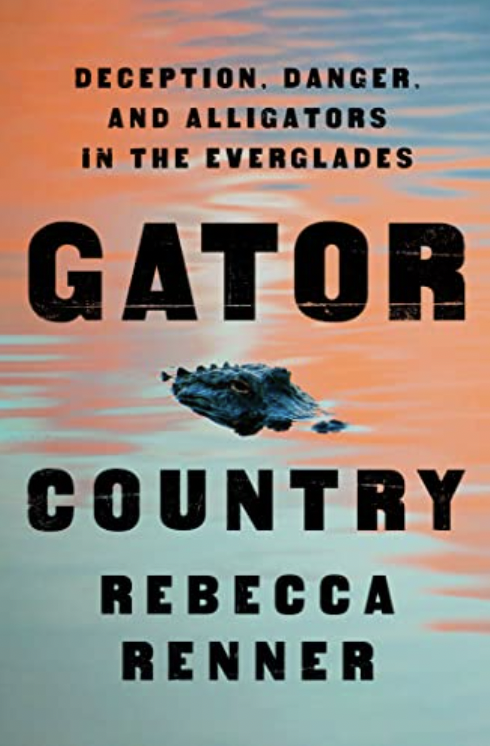Review of Gator Country: Deception, Danger, and Alligators in the Everglades, by Rebecca Renner
Review by Samuel Zammit
 Equal parts true crime and an exploration of Florida folktales, veteran journalist Rebecca Renner weaves together a thought-provoking nonfiction debut with Gator Country: Deception, Danger, and Alligators in the Everglades. Renner quickly delivers on the promise of the book’s provocative title, sharing truths more thrilling than fiction as she intertwines impassioned narratives and dispels myths surrounding conservation.
Equal parts true crime and an exploration of Florida folktales, veteran journalist Rebecca Renner weaves together a thought-provoking nonfiction debut with Gator Country: Deception, Danger, and Alligators in the Everglades. Renner quickly delivers on the promise of the book’s provocative title, sharing truths more thrilling than fiction as she intertwines impassioned narratives and dispels myths surrounding conservation.
Gator Country follows the story of Officer Jeff Babauta, his involvement with Operation Alligator Thief, and his grappling with morality as he completes one last job. Despite being the action-packed story of a Florida Fish and Wildlife Conservation Commission (FWC) officer going undercover to catch alligator poachers, Gator Country also presents difficult philosophical questions, bringing painful truths about poaching to light. As Renner tracks down Babauta, and their narratives collide, the book dissects the real lives of poachers, humanizing them in stereotype-shattering ways and calling the law itself into question. As Renner says, “The poachers in my life would balk at the idea that they’re hurting nature. They love nature.”
Renner draws on her experiences to bring to life the parts of Florida that only a Floridian could, and she makes careful use of her upbringing. Unpacking Florida storytelling motifs, Renner deciphers the tales of her fellow locals in ways an outsider might misunderstand. As such, Gator Country takes readers on an intimate romp through Florida swamps while simultaneously taking them on an undercover mission that feels like something pulled from the pages of a thrilling spy novel.
The story of Operation Alligator Thief, alongside Renner’s search for another folk hero of the swamp, Peg Brown, are delicately intertwined. Like a gator sinking beneath the surface, the reader is transported seamlessly between worlds: Babauta’s tale of the past and Renner’s hunt for the truth about Peg Brown and other seemingly kind-hearted poachers like him. Ultimately, these parallel stories converge into a bittersweet and satisfying conclusion for one of the biggest busts in FWC history.
Renner takes care to discuss the indigenous people who have had their land stolen, the impact of man on nature, and the truth about what realistically drives people to poaching, all of which stands in stark contrast to the cartoonish images of the British on safari at the turn of the century that readers might conjure when they hear the word poach. She highlights the positive and negative ways that humanity has interacted with nature and the livelihoods of their neighbors. Renner tells the story not only of nature, but of the people who have shaped and been shaped by the natural world.
Gator Country is a book for anyone looking for the juicy mess of reality in pages so suspenseful they read like fiction. In the end, Renner writes about the blurry morality of the law, friendships, betrayal, loyalty, and family, all while expertly building toward the crescendo of the true villain’s reveal, all of which gives way to an incredible ride and a riveting read.








